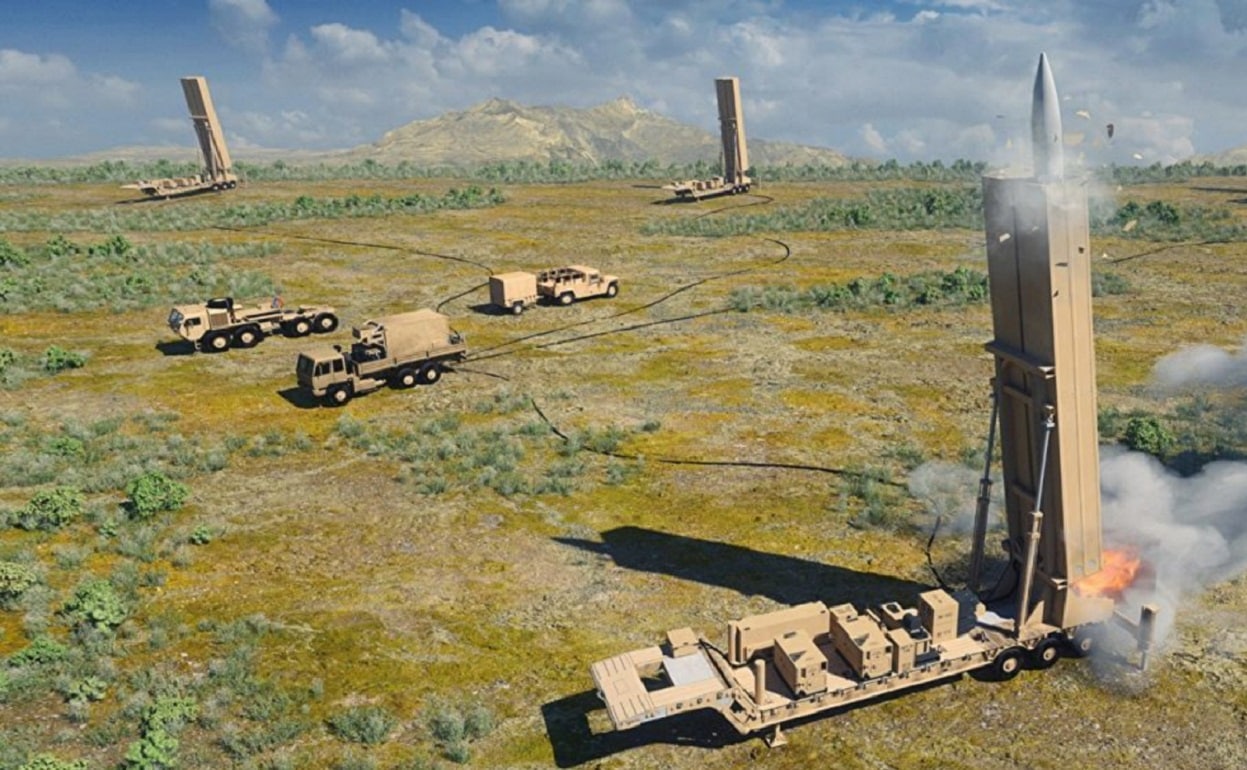Despite some setbacks during testing this year, the United States Army is still on track to field its Long-Range Hypersonic Weapon (LRHW), a surface-to-surface hypersonic missile that would be deployed in mobile batteries. Dubbed “Dark Eagle,” the platform consists of a battery operations center, four transporter-erector-launchers, and modified trucks and trailers that make up the ground equipment of the Army’s LRHW.
The program has already fielded transporter-erector-launchers and other ground elements. Earlier this year, I Corps’ 5th Battalion, 3rd Field Artillery Regiment, 17th Field Artillery Brigade received the first equipment for the battery. However, it isn’t exactly operational.
“The only thing that’s missing is the missile,” Gillian Bussey, director of the Department of Defense’s (DoD’s) Joint Hypersonics Transition Office, told attendees of the American Institute of Aeronautics and Astronautics Ascend space technology conference, according to Air Force Magazine. “We’re looking at having that fielded in the next year or two.”
The U.S. Army and U.S. Navy have been working on a joint effort, known as the Common-Hypersonic Glide Body, which had its first successful flight in March. While the Army plans to deploy the platform to the first unit later this year, the Navy is reported to be on track to field its first ship-launched hypersonic weapon by 2023 followed by a submarine-launched missile for the following year.
Hypersonic weapons have been seen as a potential game-changer, as they can fly in excess of Mach 5, or five times the speed of sound, and are generally designed to be highly maneuverable in flight. Unlike ballistic missiles, hypersonic weapons do not follow a ballistic trajectory and can maneuver en route with computerized precision to their destination, which along with greater speed could make it difficult to counter. Additionally, a hypersonic missile’s speed and force are so significant that it could inflict damage from its sheer ‘kinetic’ impact without even needing explosives.
The United States military is not alone in developing hypersonic weapons. Russia and China have also forged ahead with the weapons, and each has claimed to have made significant breakthroughs.
Won’t Come Cheap
The National Defense Strategy has already declared hypersonic weapons a top research-and-development priority alongside artificial intelligence, robotics, and directed energy. The Pentagon’s total budget request for fiscal year 2022 (FY22) hypersonic research was $3.8 billion, up $600 million from $3.2 billion for the year before.
A report this month from Bloomberg stated that the cost of hypersonic weapons will only increase, and according to an estimate compiled by the Pentagon’s independent cost assessment office, the weapons could add $21.5 billion to the Navy’s budget as well as $7 billion to the Army’s in coming years. It cited internal DoD estimates on the number of weapons planned, suggesting that it amounts to about $106 million per missile for the Army and $89.6 million for the Navy.
A Congressional Research Service’s report from last month also warned of the potential dangers the weapons could pose, and cited experts who suggest not developing them should be an option to consider.
“Some analysts who believe that hypersonic weapons could present a threat to strategic stability or inspire an arms race have argued that the United States should take measures to mitigate risks or limit the weapons’ proliferation,” the report noted. “Proposed measures include expanding New START, negotiating new multilateral arms control agreements, and undertaking transparency and confidence-building measures.”
Peter Suciu is a Michigan-based writer who has contributed to more than four dozen magazines, newspapers and websites. He regularly writes about military small arms, and is the author of several books on military headgear including A Gallery of Military Headdress, which is available on Amazon.com.

